BAILEY MILL
Bailey Mill was the first stage of Mallalieus business. It was built in three stages, beginning in 1863, 1865 and 1871 - by enterprising brothers David and Henry Mallalieu. They were in their thirties when they opened the mill, but had been weavers since their teens and founded the company in 1856. From the early days, D and H Mallalieu Bailey Mill operated vertically, taking raw fibres and dyeing it, and including spinning and weaving in the same place.In a tactical move they used the railway line that was situated close to the mill, part of the railway line was also known as the 'Delph Donkey' which was later extended to the village in 1851, so that raw wool could easily be brought in for processing, and coal was heated by boilers that produced steam to power the machinery.
The railway allowed the finished fabric to begin its journey to customers in the UK and around the world.

In the early 1890’s began to have a widespread reputation of creating quality woollen cloths, their original product was shirts, but expanded into heavy-duty products such as flannelling for men's trousers and women's dresses, this also included material for hats by supplying ‘forms’ to hatmakers in Stockport and Luton..
During World War I Mallalieus, like the rest of the British textile industry, began to produce fabrics for uniforms.. It was the outbreak of WW2, the company had to cope with the demand for essential fabrics, commissioned by the Ministry of Supply to make thousands of yards of its celebrated “Angola” shirting for the armed forces., but still adhering to the strict government supervision of the rationing system, and as the war dragged on, the staff shortage as many men and women were called up for military service and other essential service work..
The images below..located on the west side of the building
Bits and bats found on the eastern section...
NEW BEGINNINGS
In 1996 ownership of the business passed from the Mallalieus to the Gledhills, another long-established family of textile specialists in Delph and nearby Saddleworth. In 2000 the vertical production was moved a very short distance from Bailey Mill to the current site, Valley Mill, another long-established woollen mill in Delph. source..www. mallalieus.com
A 153-year relationship which ended at 9.03pm on the 15th June 2016, when the once-proud mill front disappeared in clouds of dust. The incident was witnessed by Katie Mallalieu, watching the life ebb from a landmark which has been part of her family history for generations. The culprit was apprehended , a 16 year old on suspicion of arson with intent to endanger life. He was been bailed pending further enquiries [ June 2016]




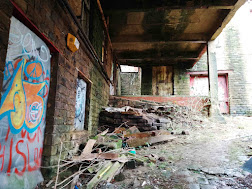


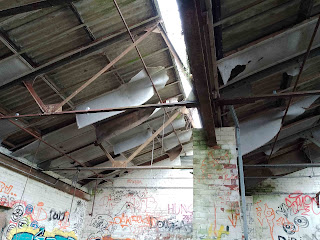

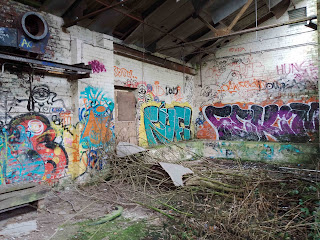
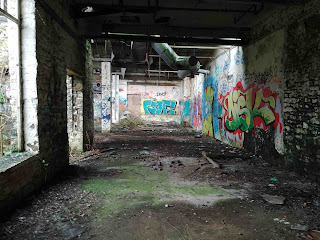




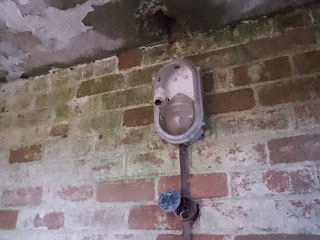

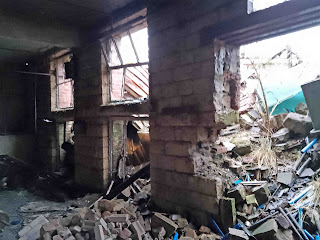
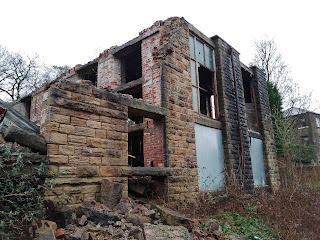

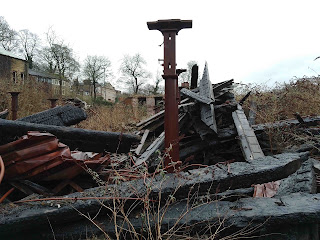
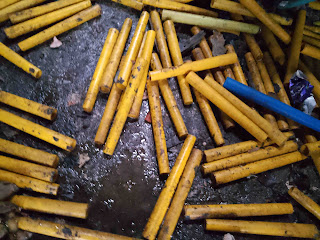




























No comments:
Post a Comment